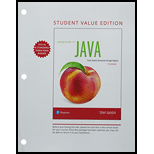
Concept explainers
Two-dimensional array:
A two dimensional array is also called as a multi-dimensional array; a multidimensional array is that all the identical arrays are put together into a single array.
- This is useful for storing same type of multiple sets of data in same place.
- The main advantage is that one-dimensional array can hold only one set of value, whereas, two-dimensional array can hold multiple sets of data in the form of rows and columns.
- The structure of a multi-dimensional array is lookalike a table (that is combination of rows and columns); it contains same type of columns.
- The first size declarator in the two-dimensional array represents row and the second size declarator represents column.
- The two dimensional array can have multiple length fields, which holds the number of rows.
- Each row in the two dimensional array has a length field which holds the number of columns.
Syntax:
The syntax of two dimensional arrays is as follows:
datatype array_name [number_of_rows][number_of_columns];
From the given syntax, a two-dimensional array named “grades” of type “int” has been created with 30 rows and 10 columns.
Explanation of Solution
b. Code to sum all the elements in a column of 2D array and store it in a variable:
//Class definition
public class Sample {
// define main function
public static void main(String[] args) {
// Creation of 2D array with size declarator
int[][] days = new int[29][5];
// Declaration of accumulator variable
int total;
// Loop to read through the values in the column
for (int col = 0; col < 5; col++) {
// Initialize the accumulator variable
total = 0;
// Loop to read through each row
for (
Want to see the full answer?
Check out a sample textbook solution
Chapter 7 Solutions
Starting Out With Java: From Control Structures Through Objects, Student Value Edition (7th Edition)
 EBK JAVA PROGRAMMINGComputer ScienceISBN:9781337671385Author:FARRELLPublisher:CENGAGE LEARNING - CONSIGNMENTProgramming Logic & Design ComprehensiveComputer ScienceISBN:9781337669405Author:FARRELLPublisher:Cengage
EBK JAVA PROGRAMMINGComputer ScienceISBN:9781337671385Author:FARRELLPublisher:CENGAGE LEARNING - CONSIGNMENTProgramming Logic & Design ComprehensiveComputer ScienceISBN:9781337669405Author:FARRELLPublisher:Cengage C++ Programming: From Problem Analysis to Program...Computer ScienceISBN:9781337102087Author:D. S. MalikPublisher:Cengage Learning
C++ Programming: From Problem Analysis to Program...Computer ScienceISBN:9781337102087Author:D. S. MalikPublisher:Cengage Learning Microsoft Visual C#Computer ScienceISBN:9781337102100Author:Joyce, Farrell.Publisher:Cengage Learning,
Microsoft Visual C#Computer ScienceISBN:9781337102100Author:Joyce, Farrell.Publisher:Cengage Learning, C++ for Engineers and ScientistsComputer ScienceISBN:9781133187844Author:Bronson, Gary J.Publisher:Course Technology Ptr
C++ for Engineers and ScientistsComputer ScienceISBN:9781133187844Author:Bronson, Gary J.Publisher:Course Technology Ptr Programming with Microsoft Visual Basic 2017Computer ScienceISBN:9781337102124Author:Diane ZakPublisher:Cengage Learning
Programming with Microsoft Visual Basic 2017Computer ScienceISBN:9781337102124Author:Diane ZakPublisher:Cengage Learning





